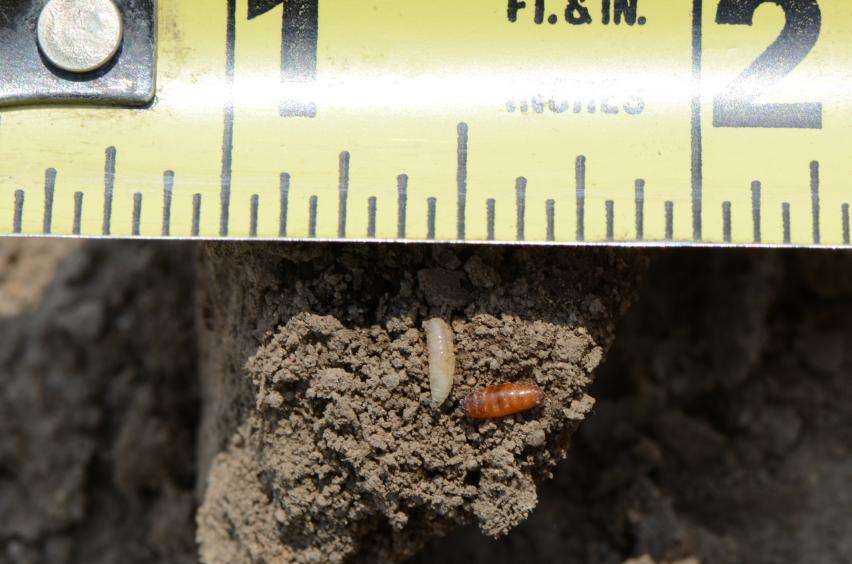By Erin W Hodgson,
Associate Professor,
Iowa State University
Seedcorn maggot is a seed and seedling pest of corn and soybean. Plant injury is especially prevalent during cool and wet springs. The larvae, or maggots, feed on germinating corn and soybean seeds or seedlings (Photo 1). They can feed on the embryo, delay development or kill the plant. Infestations tend to be field-wide instead of grouped together like for many other pests. To confirm seedcorn maggot injury, check field areas with stand loss and look for maggots, pupae and damaged seeds (e.g., hollowed out seeds or poorly developing seedlings).

Photo 1. Typical seedcorn maggot injury in soybean and corn.
Soybean photo (left) by Marlin Rice; corn photo (right) by Purdue Extension
Biology
Seedcorn maggots overwinter in Iowa as a pupa in the soil. Adult flies emerge and mate in April and May, and females lay eggs in soil. Maggot densities will be higher in soils with high organic matter (e.g., manure and green plant residue). Recent soil tillage, regardless of residue type, is attractive to egg-laying females. This fly species has a lower developmental threshold of 39°F and upper threshold of 84°F. There are 4-5 generations per year in our area.
Identification
Seedcorn maggots are white, legless and 1/4 inches long with a tapered body (Photo 2). The maggots have a black mouth with hook-like mouthparts to feed. The pupa is brown and looks like a “wheat seed” (Photo 1). The adult fly is grey to brown in color with red eyes. Adult seedcorn maggots are 1/20th inches long and look like a small house fly (Photo 3).

Photo 2. Seedcorn maggot (left) and pupa.
Photo by Brian Lang, Iowa State University

Photo 3. Seedcorn maggot adult is a small, grey fly.
Management
There are no rescue treatments for seedcorn maggot. No-till fields are less attractive to egg-laying females. Target planting when soil and moisture conditions are conducive to quick germination and vigorous growth to reduce seed and seedling pest problems. Farmers with persistent seedcorn maggot infestations should consider a later planting date, shallow planting, higher seeding rates, and turning cover crops early (Bessin 2004). Waiting two weeks (or 450 growing degree days) after tillage or manure applications to plant corn or soybean should provide enough time for the seedcorn maggots to complete development and move to another host (Gessell and Calvin 2000).
Insecticidal seed treatments are also an option for persistent seedcorn maggot pressure. If significant stand loss occurs, replanting the field is an option. A replant decision should be based on percent stand loss and cost of additional seed. Resources to aid in replant decisions are available for
corn and
soybean.
References
Source: Iowa State University